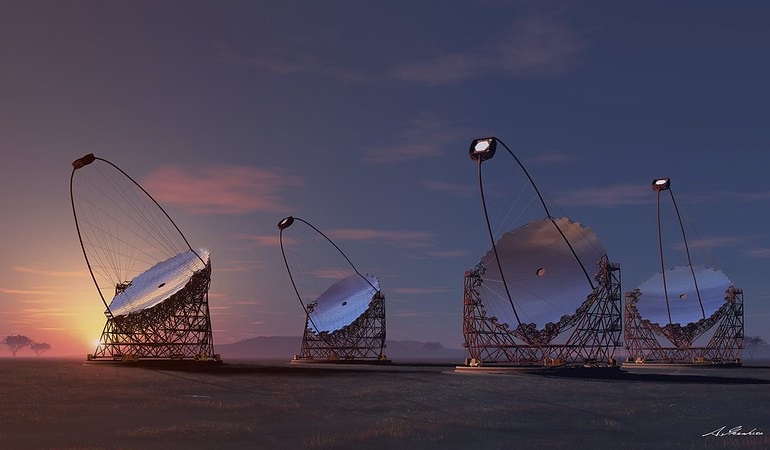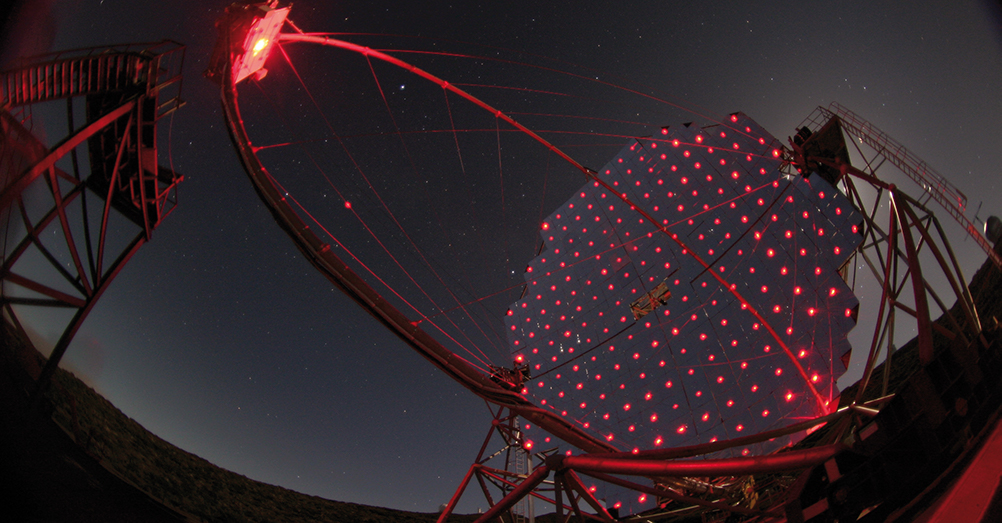High energy astrophysics deals with the study of very energetic processes in the Universe, where particles are accelerated to high energies around many different objects of very different sizes and interact in complex environments. This includes star-forming regions and young stellar objects, accreting neutron stars, black holes and microquasars, early-type stars with very strong stellar winds, young isolated pulsars and their nebulae, pulsars in binary systems, supernova remnants, gamma-ray bursts or supermassive black holes in the form of Active Galactic Nuclei, etc.
The observed multi-wavelength emission from these objects is produced by a variety of radiation processes such as synchrotron radiation, inverse Compton scattering or hadronic processes, among others. The study of this emission allows astrophysicists to constrain physical parameters of the systems and understand the physics behind them.
The very-high-energy (VHE) gamma-ray domain is the latest spectral window opened up for study. Some of the most energetic events and processes in the Universe, with energies very often outside the range of accelerators on Earth, are being sampled thanks to new complex and sophisticated detection technologies, data processing algorithms and theoretical models. The situation for high-energy (HE) gamma-rays is similar, and the amount of unidentified sources represents a significant fraction of the total population.
OUR CONTRIBUTION
A general aim of the ICCUB team working on this field is to achieve a better understanding of the high-energy galactic and extragalactic sources, gathering data over a large wavelength range (from radio to TeV energies) as well as modeling emission processes in different scenarios (jets, shocks, interaction with the interstellar medium, etc.).
In particular, researchers from the ICCUB are interested in the study of the high-energy emission from X-ray and gamma-ray binaries and Active Galactic Nuclei. These studies are conducted using forefront ground-based and satellite-born facilities such as VLA, EVN, ESO telescopes and GTC, Chandra and XMM, Agile and Fermi or MAGIC. We are also well connected to multi-messenger alerts such as Gravitational Waves and neutrinos.
Moreover, the ICCUB high energy astrophysicists are members of the MAGIC Collaboration since 2006 and are now contributing, together with experimental physicists and engineers from the ICCUB, to the Cherenkov Telescope Array (CTA) project, the next generation ground-based observatory for gamma-ray astronomy at very-high energies.
LINES OF RESEARCH
Multidisciplinary approach to high-energy processes in galactic and extragalactic sources with astrophysical outflows:
- Observations (radio, IR/O, X- and gamma rays): galactic sources at full spectrum; multiwavelength studies of extragalactic sources;
- Theory: numerical and semi-analytical modeling (radiation processes, magnetohydrodynamics)
- Types of sources: microquasars; gamma-ray binaries; massive stars; unidentified galactic sources; extended sources; supermassive black holes, extragalactic jets; starbursts
- Instrumentation: developing future instrumentation (CTA - gamma rays)

